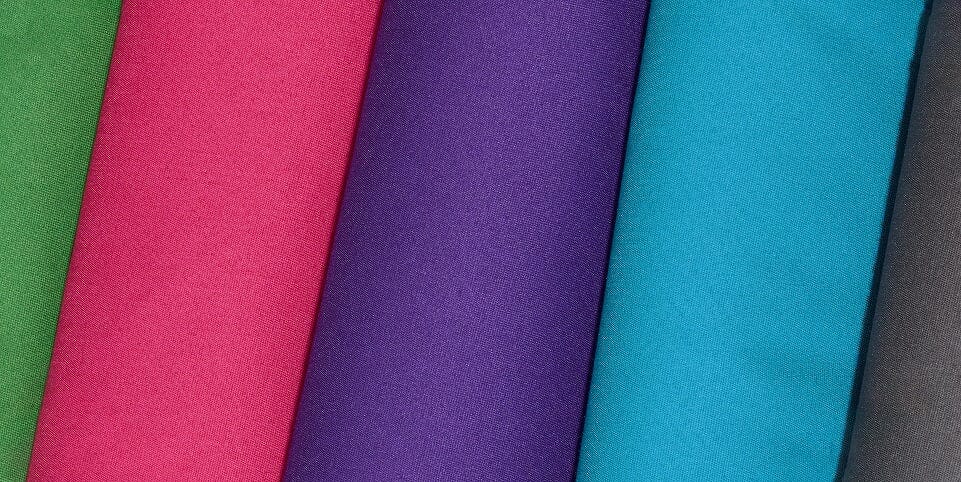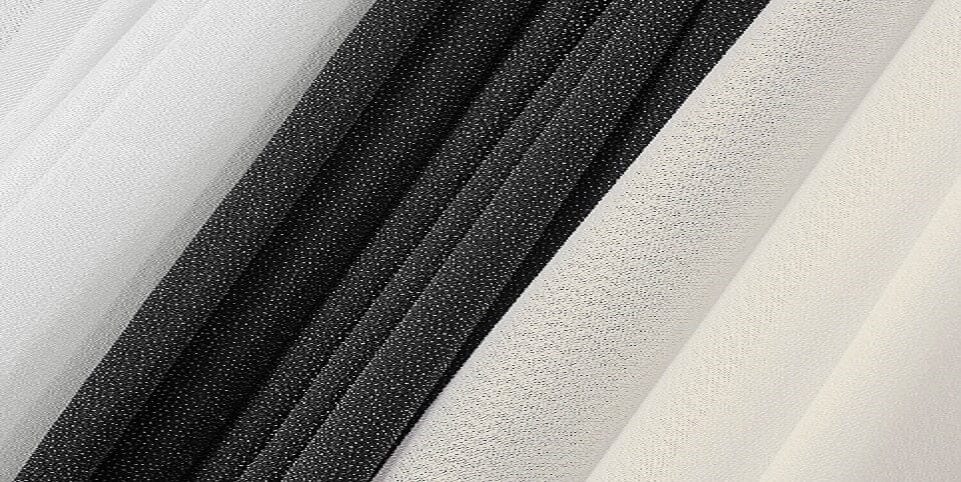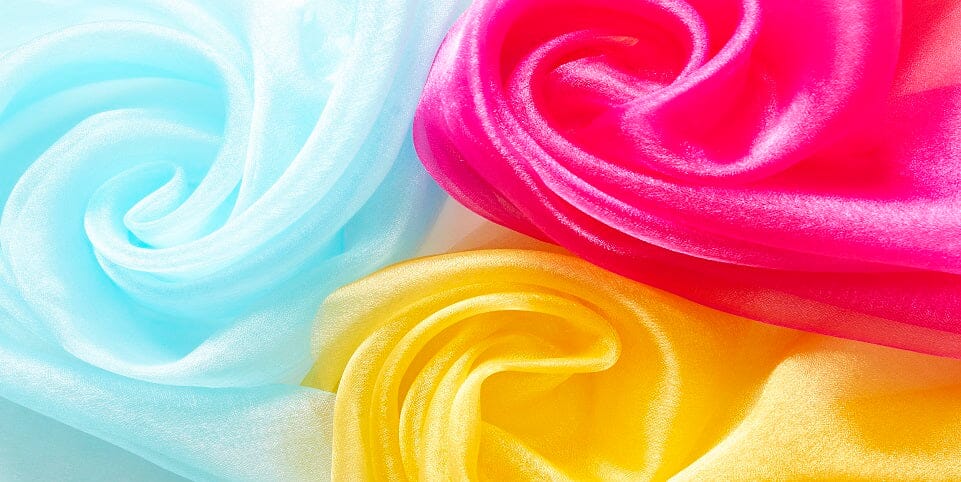Introduction
Welcome to the world of Broadcloth – a textile that embodies simplicity, practicality, and versatility. This unassuming fabric, easily manufactured and sourced primarily from cotton or blended with polyester, holds a unique charm. With its lightweight to mediumweight nature, a crisp texture, and a smooth feel against the skin, Broadcloth has found its way into an array of applications, from garments and accessories to quilts and home decor.
Join us on this journey as we delve deep into the world of Broadcloth, exploring its history, properties, and the compelling reasons why it should be your go-to choice for your next sewing project.
What Is Broadcloth?
Broadcloth is a plain woven fabric. This fabric is made by tightly interlacing a set of horizontal and vertical yarns in a one-over-one pattern. This straightforward manufacturing process, allows these textiles to be produced quickly and affordably. Additionally, the tight, plain weave of Broadcloth fabric makes it slightly shiny, durable, even surfaced, and stiff when draped.
While Broadcloth is tightly woven and solid, it is known to be a thinner fabric that can be slightly sheer. That being said, the fabric is also perfect for regulating temperature when the weather is hot.
What is Broadcloth Made Of?
Historically, Broadcloth fabric originated in Western Europe where it was woven from thick and dense carded wool. The original wool broadcloths were much thicker and heavier than today’s broadcloth. When used for garments, the wool fabric allowed for weather protection, abrasion resistance, and the ability to be cut without fraying.
Today, Broadcloth fabric is sourced primarily from cotton, polyester, or a blend of the two fibers. A cotton content of broadcloth makes it absorbent, hypoallergenic, and easy to clean. On the other hand, a broadcloth made from polyester is more durable, moisture wicking, and wrinkle resistant. A cotton polyester blend is the best of both worlds, giving this type of Broadcloth fabric characteristics from both types of fibers.
What Is Broadcloth Used For?
The plain weave and smooth, even texture of Broadcloth fabric makes it easy to use fora variety of crafts. Additionally, this affordably priced fabric can be dyed in a variety of colors, or feature vibrant printed designs, to match any of your needs. For these reasons, Broadcloth fabric is a great choice to sew, quilt, or DIY with.
Check out this list of Broadcloth craft ideas to get inspired for your next creation:
-
Apparel
Broadcloth is commonly used for formal or casual, shirts, blouses, dresses, and skirts. The fabric’s smooth texture is comfortable to the touch, and this type of fabric will keep you cool in the heat. Its ability to hold its shape well makes it suitable for structured garments that require clean lines and defined silhouettes.
The featured patterns or bold colors of Broadcloth are sure to stand out and draw attention, and the price point of the fabric is hard to beat. Due to its moderate weight and smooth finish, Broadcloth fabric can be layered under other garments without adding excessive bulk. Lasty, when made with cotton, the fabric is hypoallergenic and is made into shirts, pants, and dresses, that are also easy to clean.
-
Decor
Many decor items can be sewn with Broadcloth fabric. The smooth texture and breathability of this fabric allow it to be used as bed sheets, pillow cases, and duvet covers; when woven with cotton, the bedding is hypoallergenic meaning it causes fewer skin reactions than syncthetically sourced fabrics.
Additionally, the stiff and crisp drape of Broadcloth makes this type of fabric ideal for curtains, table covers, and table linens. Broadcloth fabric is generally easy to clean, and when woven with polyester, gains wrinkle resistant properties.
-
Quilting
Broadcloth is a quilter's best friend, thanks to its ease of use and versatility. Its tight, plain weave ensures secure and even quilting stitches, resulting in durable and long-lasting quilts.
This fabric comes in a vast array of colors, and its ability to be dyed or printed with vibrant designs allows quilters to get creative with their projects. Plus, when woven with cotton, Broadcloth offers a comfortable and hypoallergenic option, making it perfect for quilts meant for snuggling.
If durability is a priority, consider a polyester blend, which also brings moisture-wicking and wrinkle resistance benefits to the table. Broadcloth's low maintenance requirements and suitability for a wide range of quilt styles make it an ideal choice for both novice and experienced quilters alike.
Conclusion
From a simple plain weave comes so many possibilities. Broadcloth fabric is crisp, affordable, and smooth textured fabric, that is generally woven from cotton and/or polyester. This fabric is versatile and can be used to create a wide range of clothing and craft items. On top of that it is easy to sew and quilt. Next time you are in creation mode, consider using Broadcloth fabric. Fabric Wholesale Direct offers a wide selection of Broadcloth in various sizes, contents, colors, and printed patterns.
Shop Broadcloth fabric online by the yard or in bulk by the roll at wholesale prices for your next creation!.
 Transparent
Transparent
 White
White
 Pink
Pink
 Red
Red
 Orange
Orange
 Ivory
Ivory
 Yellow
Yellow
 Gold
Gold
 Brown
Brown
 Green
Green
 Blue
Blue
 Purple
Purple
 Grey
Grey
 Black
Black
 Multi
Multi
 Abstract
Abstract
 African Print
African Print
 Animal Print
Animal Print
 Baby & Nursery
Baby & Nursery
 Buffalo Check
Buffalo Check
 Camo Print
Camo Print
 Celestial
Celestial
 Chevron
Chevron
 Church
Church
 Damask
Damask
 Embroidered
Embroidered
 Floral
Floral
 Geometric
Geometric
 Gingham Check
Gingham Check
 Houndstooth
Houndstooth
 Licensed
Licensed
 Paisley
Paisley
 Plaid
Plaid
 Polka Dot
Polka Dot
 Sports
Sports
 Stripe
Stripe
 Tie Dye
Tie Dye








12 comments
Joan Astwood-Sutton
Hi,
I am enquiring about 20-30 yards of various fabrics. At least 30 different types and in various colours. I am seeking prices for assorted fabrics. Thanks
Hi,
I am enquiring about 20-30 yards of various fabrics. At least 30 different types and in various colours. I am seeking prices for assorted fabrics. Thanks
Janice Lamb
I ordered samples, I haven’t received them. That was on December 19th. The total was $8.93. I ordered 4 swatches.
I ordered samples, I haven’t received them. That was on December 19th. The total was $8.93. I ordered 4 swatches.
Discountler
Thank you for the detailed review of the fabric!
Thank you for the detailed review of the fabric!
Sherry Fisher
I am needing a black fabric back drop material for our Church Christmas Concert. I have 145 inches long from ceiling to floor and the width 23ft 4” wide . I want to buy a solid piece of fabric. I want it full do I need to double the width ? Also I am looking at 2 different fabrics. Cotton Poly Broadcloth OR Interlock 100% Poly 70 denier .. which would be the best for this project. Ty
I am needing a black fabric back drop material for our Church Christmas Concert. I have 145 inches long from ceiling to floor and the width 23ft 4” wide . I want to buy a solid piece of fabric. I want it full do I need to double the width ? Also I am looking at 2 different fabrics. Cotton Poly Broadcloth OR Interlock 100% Poly 70 denier .. which would be the best for this project. Ty
Judy Boyce
I am looking for fabric to make dust/moisture covers for machines used in wrapping vehicles
I am looking for fabric to make dust/moisture covers for machines used in wrapping vehicles
Era Lee
I love this site I have ordered so much fabric and loved it all. I am about to buy some more.
I love this site I have ordered so much fabric and loved it all. I am about to buy some more.
Barbara
Thank you, good article
Thank you, good article
Lorie
Hello I’m liking your site and blogs.. I have been sewing since I was approximately 10 I’m now 64 and still sewing, loving life and eager to learn new sewing tricks and yes I too have to touch my fabric..
Hello I’m liking your site and blogs.. I have been sewing since I was approximately 10 I’m now 64 and still sewing, loving life and eager to learn new sewing tricks and yes I too have to touch my fabric..
Charlene
I’m like Patti; I don’t know fabrics by name but by touch. This blog is educational. I think more information like this is a good thing for those of us who are novice at sewing. Thanks.
I’m like Patti; I don’t know fabrics by name but by touch. This blog is educational. I think more information like this is a good thing for those of us who are novice at sewing. Thanks.
Patti
I loved the new info. I only know fabric by feel. I am often asked what fabric it is that I am working with and I never really know what kind of fabric it is. I just know that when I walk into a store I reach out and I touched the fabric and when I find one that I that feels the way,I want I take it home.
I loved the new info. I only know fabric by feel. I am often asked what fabric it is that I am working with and I never really know what kind of fabric it is. I just know that when I walk into a store I reach out and I touched the fabric and when I find one that I that feels the way,I want I take it home.
peter
good article
good article
Jacob Ezra
Wow, I never knew that you could make so many things with broadcloth fabric – I loved reading this blog!
Wow, I never knew that you could make so many things with broadcloth fabric – I loved reading this blog!